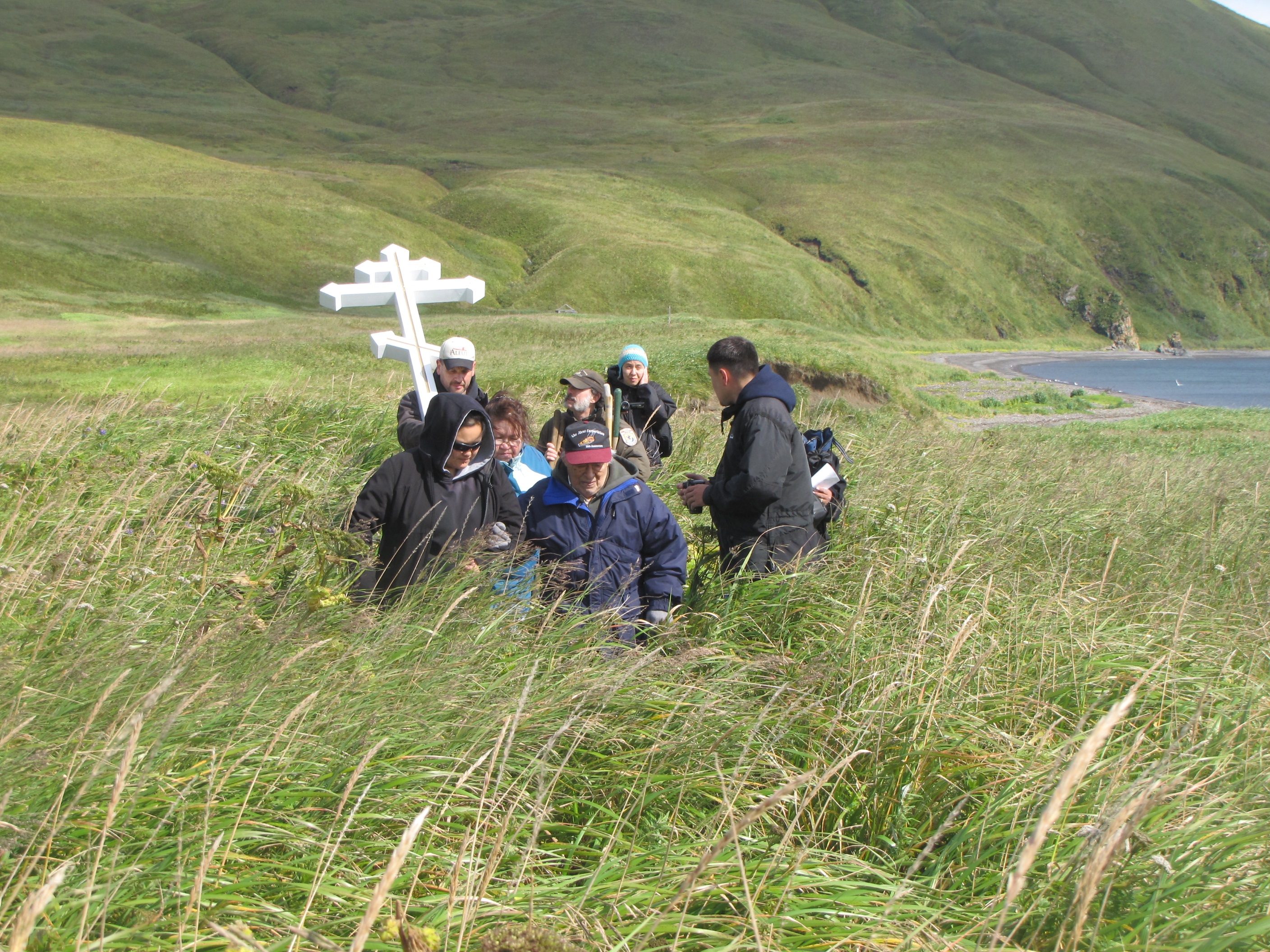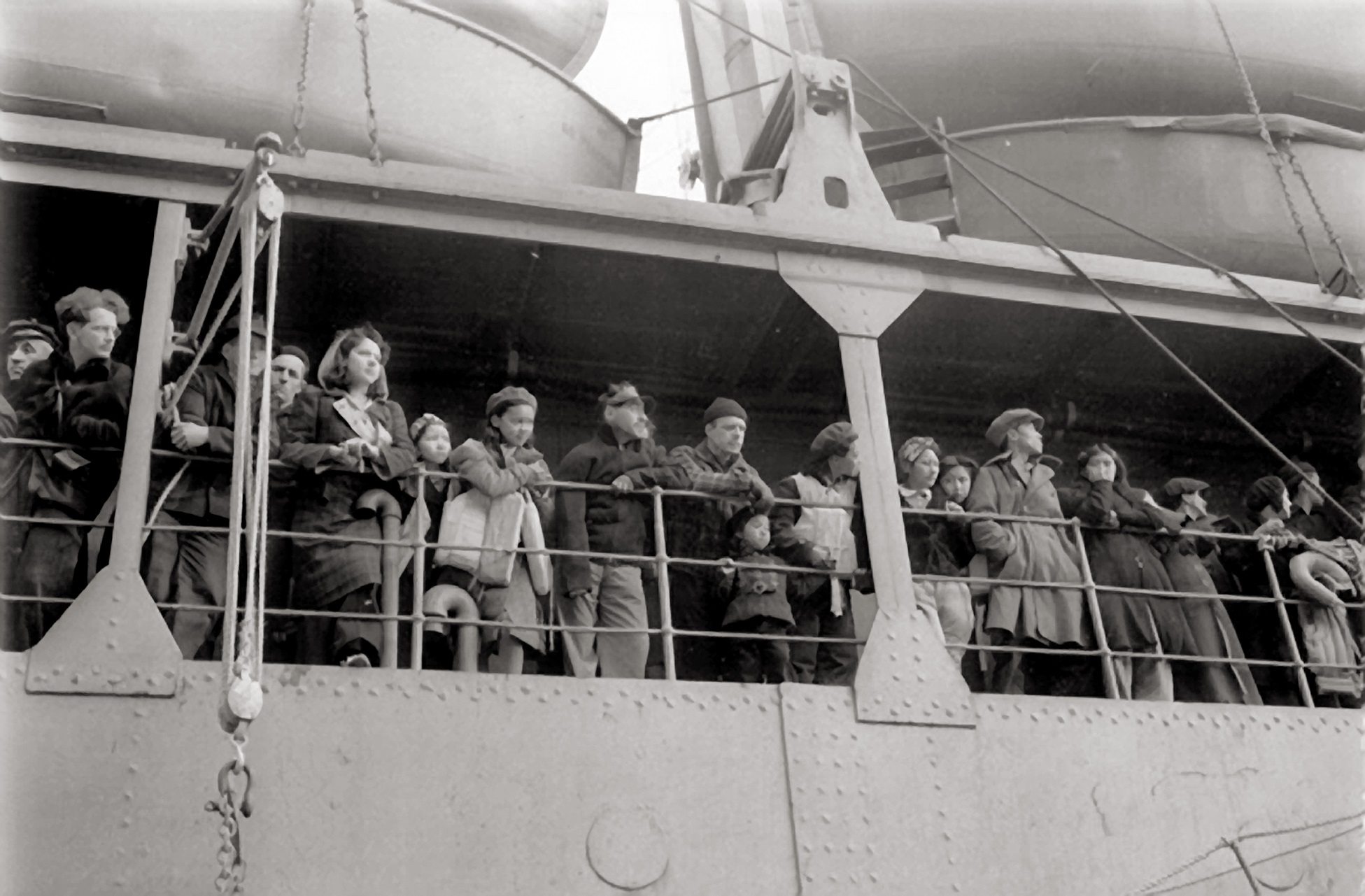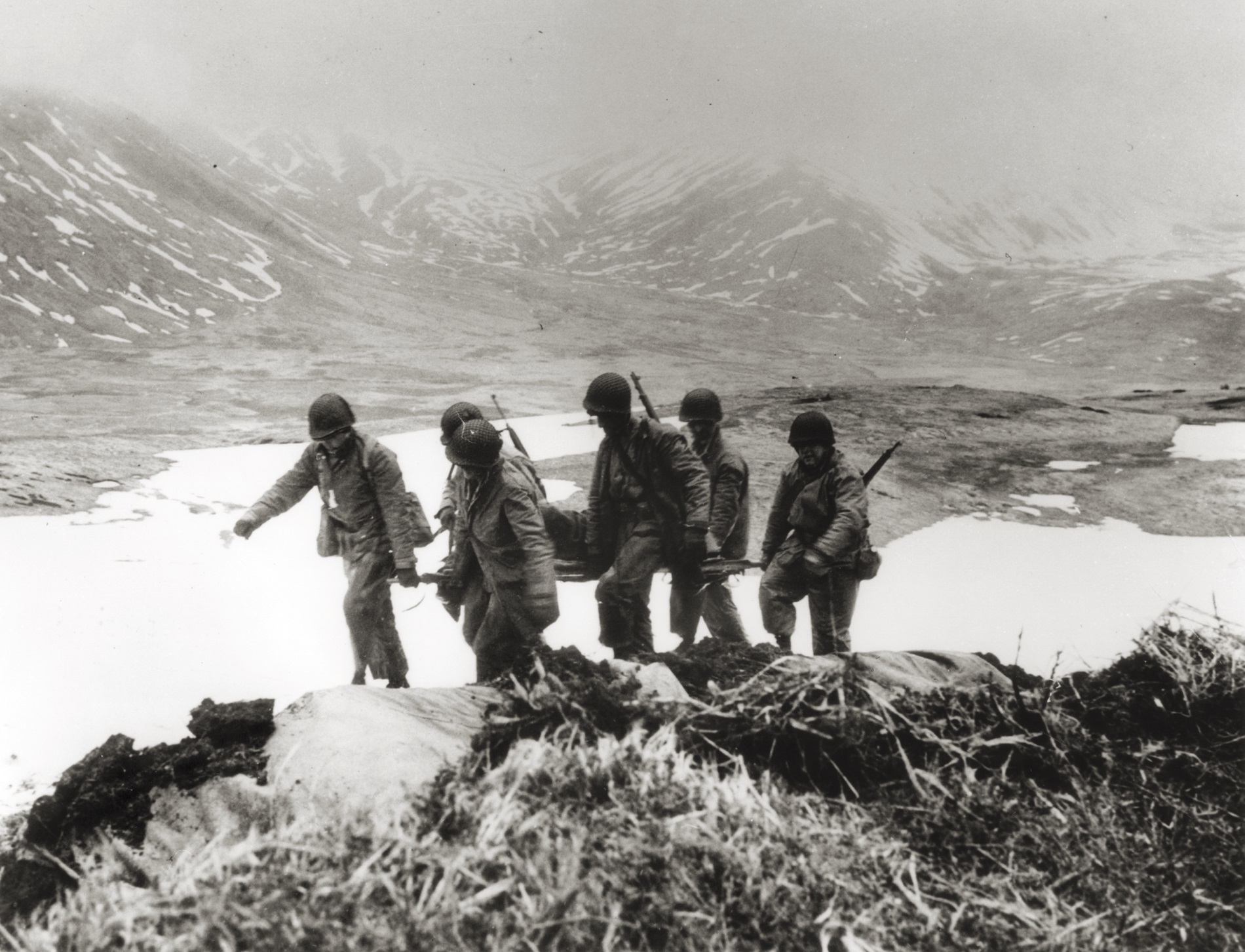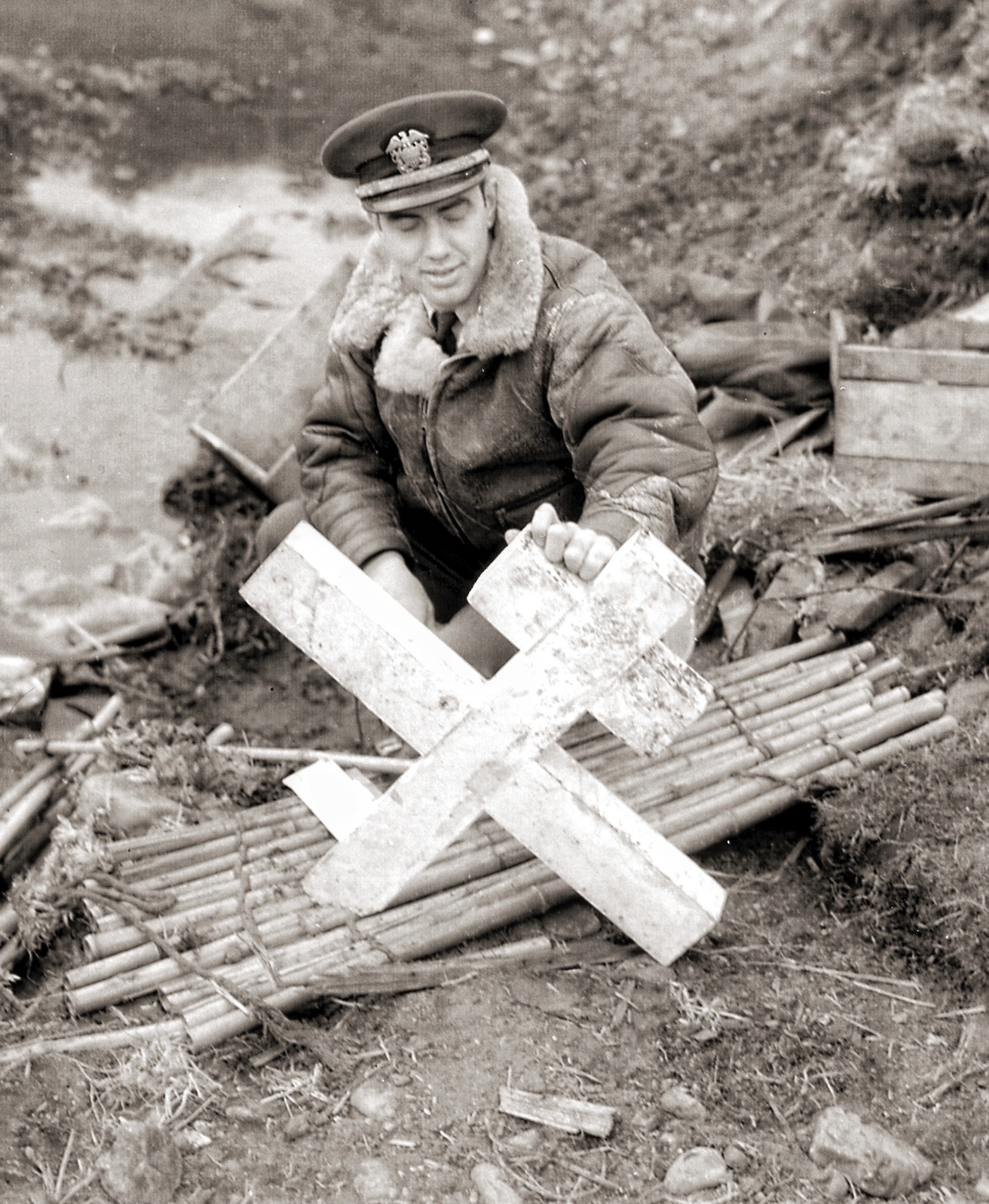The remote Aleutian Islands, home to the Unangax̂ (Aleut) people for over 8,000 years, became a fiercely contested Pacific battleground in World War II. Some Unangax̂ were taken from their homelands as Japanese prisoners of war while the others were evacuated from the islands by the government. Both groups suffered greatly during the war, and some would never return to their villages.
A homeland changed
In September 2009, Nick Lekanoff, Sr., former Makushin resident, traveled with his daughter and other descendants of Makushin on the Tiglax to visit the village site, which had been left behind in the evacuation of 1942 and never permanently resettled.
Evacuation and internment
Pribilof villagers, here lining the railing of the USAT Delarof on the day of their departure (June 15, 1942), were evacuated with only a few hours notice and no idea of their ultimate destination.
The battle for Attu Island
U.S. wounded are gathered from the battlefield on Attu Island. The battle on Attu, lasting nearly 20 days, was the second most deadly in the Pacific Theater.
Cultural collision
The Aleutian campaign brought together Russian, Native Alaskan, Japanese, and Euroamerican cultures. During the war 7 historic churches were damaged or destroyed. Villages were unrecognizable or burned to the ground and personal belonging lost or stolen.
Anti-aircraft Gun Artifact
The Aleutian Islands WWII National Historic Area preserves historic landscapes that evidence war.




